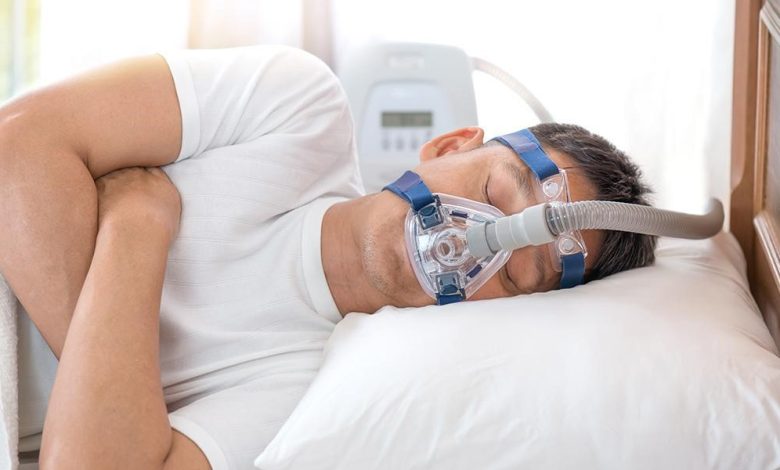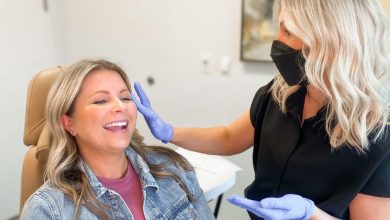The Most Common Types and Treatments of Sleep Apnea

Sleep apnea is a sleep disorder that causes irregular breathing and snoring patterns that can cause apnea. Apnea is when an individual momentarily stops breathing completely. The inability to get restful sleep can also lead to stroke, severe exhaustion, diabetes, hypertension, etc. The best device that can treat sleep apnea effectively is a CPAP machine. CPAP machines for rent are the most recommended and widely used equipment for apnea.
There are mostly two types of sleep apnea, but individuals can have obstructive sleep apnea, central sleep apnea, or features of both.
- Obstructive Sleep Apnea
Obstructive Sleep Apnea is the most common type of apnea. Air usually goes from the nose through the nasopharynx into the laryngopharynx, larynx, and finally into the trachea. When there is a blockage in this air passage, it causes Obstructive Sleep Apnea.
Obstructive Sleep Apnea can be developed due to the following reasons:
- The patient might have swollen tonsils or adenoid glands caused by infection,
- When the patient has allergies that develop because of the swelling of the tissue in the nasopharynx
- In overweight individuals, too much weight in the neck’s soft tissues can obstruct the air passage, especially when lying down.
- An extreme overbite might pull the jaw back and block the airway.
These problems are most evident at night because hormonal changes cause the muscles around the airway to become slightly less stiff while sleeping. This means they cannot keep the airway open, making it more likely to get obstructed.
- Central sleep apnea
Central sleep apnea is “central” or related to the central nervous system. This occurs when the brain intermittently stops trying to breathe for 10 to 30 seconds. In such cases, the apnea can last for several seconds consistently even after waking up, triggering feelings of panic, and further interrupting the sleep cycle.
Central sleep apnea begins with an initial episode of hyperpnea when the brain directs the lungs to begin hyperventilating during sleep by increasing the respiratory rate. This fast breathing leads to a drop in the blood’s carbon dioxide levels, causing hypocapnia. When the carbon dioxide drops below a certain point, the body falls into a state of apnea, failing to make no effort to breathe and taking in no oxygen. This induces the carbon dioxide levels to rise back to normal levels, and then, as the apnea continues, they keep rising, which is called hypercapnia. The high carbon dioxide levels trigger hyperpnea again, and the cycle starts all over.
The respiratory system goes rapidly back and forth between two conditions, first making no effort to breathe and then hyperventilating, with no intermediary state.
Symptom of Sleep Apnea
The most typical symptom of sleep apnea is severe sleep deprivation. Disrupted sleep can cause stress-induced Insomnia and nocturia, the excessive need to urinate during the night.
The effects are also noticeable during the day because the loss of restful sleep leads to headaches, fatigue, and difficulty concentrating. Apneic episodes are usually preceded by noisy and loud snoring, interrupting the individual’s sleep and the others accompanying them. Individuals with sleep apnea have a higher risk for respiratory failure, heart failure, certain types of cancer and diabetes.
Sleep apnea on its own is seldom fatal, but it can aggravate other health problems. For example, a decline in oxygen levels can activate anginal chest pain and irritate heart cells, leading to irregular heartbeat and arrhythmia.
Diagnosing sleep apnea
Before diagnosing sleep apnea, a sleep study of the individual is essential as it helps identify sleep apnea episodes, the more episodes, the more severe the sleep apnea. The sleep study usually involves getting monitored overnight with a polysomnogram.
A polysomnogram tracks brain movement, oxygen and carbon dioxide blood levels, vital signs, and outward symptoms like snoring and movement.
Treating sleep apnea
Treating sleep apnea starts with avoiding sleeping pills, alcohol, and other depressant medications. This can calm the throat muscles around the airway and help the individual sleep better. Additionally, sleeping on the side instead of supine position can also benefit because it creates better airflow into the lungs.
For severe sleep apnea, individuals can use continuous positive airway pressure devices such as BiPAP machines on rent or CPAP devices for short. These machines force the airways to open with a constant stream of pressurized air delivered through nasal prongs or a plastic face mask. When used Appropriately, this is highly effective, but it demands continuous usage. Most people eventually stop using these devices, finding them annoying or difficult to wear, and the problem continues.
Individuals can also benefit from customized oral mouthpieces that help enhance airflow during sleep.
Obstructive sleep apnea can also be managed surgically, such as realigning the jawbone or removing large adenoid tissue; however, this can complicate procedures because surgical swelling and anesthesia can worsen sleep apnea in the short term.
Conclusion
Sleep apnea can be due to physical airway obstruction, or a neurological malfunction created by imbalances in the blood’s oxygen levels, controlling breathing cycles.



